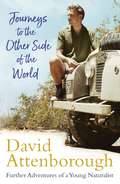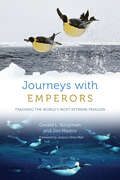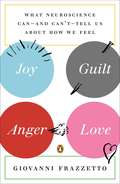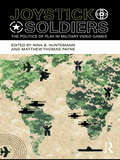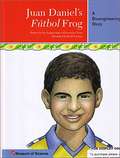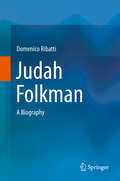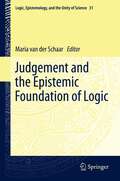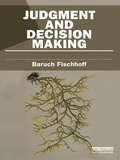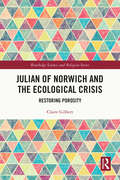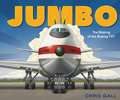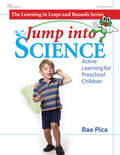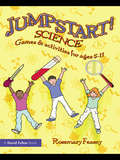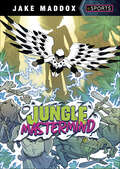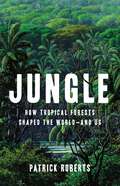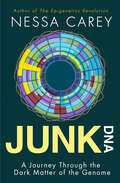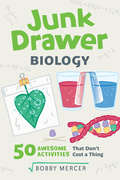- Table View
- List View
Journeys to the Other Side of the World: further adventures of a young David Attenborough
by Sir David Attenborough'With charm, erudition, humour and passion, the world's favourite natural history broadcaster documents some of his expeditions from the late 1950s onwards' Sunday ExpressFollowing the success of the original Zoo Quest expeditions, the young David Attenborough embarked on further travels in a very different part of the world.From Madagascar and New Guinea to the Pacific Islands and the Northern Territory of Australia, he and his cameraman companion were aiming to record not just the wildlife, but the way of life of some of the indigenous people of these regions, whose traditions had never been encountered by most of the British public before.From the land divers of Pentecost Island and the sing-sings of New Guinea, to a Royal Kava ceremony on Tonga and the ancient art of the Northern Territory, it is a journey like no other. Alongside these remarkable cultures he encounters paradise birds, chameleons, sifakas and many more animals in some of the most unique environments on the planet.Written with David Attenborough's characteristic charm, humour and warmth, Journeys to the Other Side of the World is an inimitable adventure among people, places and the wildest of wildlife.'Abundantly good' TLS'A wondrous reminder of Attenborough's pioneering role . . . full of delightful tales' Daily Express'An adventure that sparked a lifetime's commitment to the planet' The Lady'Attenborough is a fine writer and storyteller' Irish Times
Journeys with Emperors: Tracking the World's Most Extreme Penguin
by Gerald L. Kooyman Jim MastroWith stunning photographs from the ice edge, a firsthand account of a researcher’s time in Antarctica and of the perilous journeys of the world’s largest penguin species: the iconic emperor. Nearly all emperor penguin colonies are extremely remote; of the sixty-six known, fewer than thirty have been visited by humans, and even fewer have been the subject of successful research programs. One of the largest known emperor penguin colonies is found on a narrow band of sea ice attached to the Antarctic continent. In Journeys with Emperors, Gerald L. Kooyman and Jim Mastro take us to this far-flung colony in the Ross Sea, showing us how scientists gained access to it, and what they learned while living among the penguins as they raised their chicks. The primary mission was to record the birds’ activities at sea, and the data revealed important aspects of emperor penguin behavior and physiology: for instance, that in the course of hunting for food, some of the penguins dive to depths of greater than five hundred meters (a third of a mile, which is deeper than for any other diving bird). The researchers also discovered that, crucially, most of the emperor’s life is actually spent at sea, with fledged chicks and adults making separate, perilous journeys through icy water. When chick nurturing is complete, the fledglings abandon the colony in large groups, heading north to the Southern Ocean. The adults leave at the same time, traveling one thousand kilometers eastward across the Ross Sea to a sea-ice sanctuary for molting. During this journey, they must gain enough weight to survive the month-long molt, when every feather is replaced and the birds cannot enter the water to feed. After the molt, many if not most return to the colony to breed once again. For the males, this means another fast—this time for 120 days as they incubate their eggs. The nearness of the colony to the ice edge spared the penguins the long, energy-draining march for which other colonies are well-known. It also allowed researchers to observe the penguins’ departures to and arrivals from their foraging journeys, as well as their dangerous interactions with leopard seals and killer whales. Featuring original color photographs and complemented with online videos, Journeys with Emperors is both an eye-opening overview of the emperor penguin’s life and a thrilling tale of scientific discovery in one of the most remote, harsh, and beautiful places on Earth.
Joy Adamson's Africa
by Joy AdamsonFrom the Book Jacket: Joy Adamson is a woman of many talents and immense energy. This lavishly illustrated volume reveals the scope of her interests and achievements as wood carver, flower painter, portraitist of birds, fish, insects, animals and people. In a delightfully vivid text keyed to the illustrations, joy Adamson tells about the background of her work in the visual arts. Married to a botanist, who took her to Kenya, she started collecting and painting the indigenous flora of East Africa. Exploring the coral reefs of the Indian Ocean, she sketched the coral fish on the reef before their colors faded. She painted whatever aroused her interest : insects, reptiles, shells, and what she calls the wonders of nature-insects that shape themselves into flowers, and other forms of ingenious camouflage. On a Government commission, she made a record of the customs and costumes of the Kenya tribes, spending over six years living among these Africans, often in very isolated places. After her marriage to George Adamson, a Senior Game Warden of the Northern Frontier District, she became foster mother of lions, elephants, monkeys, a tree hyrax, a buffalo, and started her sensational work with cheetah. Living constantly near wild animals, she observed them at close range and made many sketches. This rich and varied life is here documented in pen and brush, a delight for lovers of nature and admirers of a gifted, intrepid woman, a pioneer in ecological concern.
Joy, Guilt, Anger, Love
by Giovanni FrazzettoIs science ever enough to explain why we feel the way we feel? In this engaging account, renowned neuroscientist Giovanni Frazzetto blends cutting-edge scientific research with personal stories to reveal how our brains generate our emotions. He demonstrates that while modern science has expanded our knowledge, investigating art, literature, and philosophy is equally crucial to unraveling the brain’s secrets. What can a brain scan, or our reaction to a Caravaggio painting, reveal about the deep seat of guilt? Can ancient remedies fight sadness more effectively than antidepressants? What can writing poetry tell us about how joy works? Structured in seven chapters encompassing common human emotions-anger, guilt, anxiety, grief, empathy, joy, and love-Joy, Guilt, Anger, Love offers a way of thinking about science and art that will help us to more fully understand ourselves and how we feel. .
Joystick Soldiers: The Politics of Play in Military Video Games
by Nina B. Huntemann Matthew Thomas PayneJoystick Soldiers is the first anthology to examine the reciprocal relationship between militarism and video games. War has been an integral theme of the games industry since the invention of the first video game, Spacewar! in 1962.While war video games began as entertainment, military organizations soon saw their potential as combat simulation and recruitment tools. A profitable and popular relationship was established between the video game industry and the military, and continues today with video game franchises like America’s Army, which was developed by the U.S.Army as a public relations and recruitment tool. This collection features all new essays that explore how modern warfare has been represented in and influenced by video games. The contributors explore the history and political economy of video games and the "military-entertainment complex;" present textual analyses of military-themed video games such as Metal Gear Solid; and offer reception studies of gamers, fandom, and political activism within online gaming.
Juan Daniel's Futbol Frog: A Bioengineering Story
by the Engineering is Elementary Team Keith FavazzaNIMAC-sourced textbook
Judah Folkman: A Biography
by Domenico RibattiThe aim if this book is to analyze the scientific biography of Judah Folkman, one of the most important scientist of the last century. More 50 years ago, Folkman found a revolutionary new way to think about cancer. Blood supply, Folkman hypothesized, was the key to tumor growth. Without new blood vessels, tumors simply did not thrive. In 1971, Folkman published his theory of angiogenesis in the “New England Journal of Medicine”. Angiogenesis, the formation and recruitment of new blood vessels, is necessary for tumor growth. Critics of the theory were silenced over time as Folkman and his colleagues reported the first purified angiogenic molecule, the first angiogenesis inhibitor and proposed the concept of angiogenic disease. The mechanism of angiogenesis is now a worldwide field of investigation. Over the years, Folkman and a growing team of researchers have isolated the proteins and unraveled the processes that regulate angiogenesis. Meanwhile, a new generation of angiogenesis research has emerged as well, widening the field into new areas of human disease and deepening it to examine the underlying biological processes responsible for those diseases.
Judgement and the Epistemic Foundation of Logic
by Maria van der SchaarThis compelling reevaluation of the relationship between logic and knowledge affirms the key role that the notion of judgement must play in such a review. The commentary repatriates the concept of judgement in the discussion, banished in recent times by the logical positivism of Wittgenstein, Hilbert and Schlick, and the Platonism of Bolzano. The volume commences with the insights of Swedish philosopher Per Martin-Löf, the father of constructive type theory, for whom logic is a demonstrative science in which judgement is a settled feature of the landscape. His paper opens the first of four sections that examine, in turn, historical philosophical assessments of judgement and reason; their place in early modern philosophy; the notion of judgement and logical theory in Wolff, Kant and Neo-Kantians like Windelband; their development in the Husserlian phenomenological paradigm; and the work of Bolzano, Russell and Frege. The papers, whose authors include Per Martin-Löf, Göran Sundholm, Michael Della Rocca and Robin Rollinger, represent a finely judged editorial selection highlighting work on philosophers exercised by the question of whether or not an epistemic notion of judgement has a role to play in logic. The volume will be of profound interest to students and academicians for its application of historical developments in philosophy to the solution of vexatious contemporary issues in the foundation of logic.
Judgment and Decision Making (Earthscan Risk in Society)
by Baruch FischhoffBehavioral decision research offers a distinctive approach to understanding and improving decision making. It combines theory and method from multiple disciples (psychology, economics, statistics, decision theory, management science). It employs both empirical methods, to study how decisions are actually made, and analytical ones, to study how decisions should be made and how consequential imperfections are. This book brings together key publications, selected to represent the major topics and approaches used in the field. Put in one place, with integrating commentary, it shows the common elements in a research program that represents the scope of the field, while offering depth in each. Together, they provide a vision for what has become a burgeoning field.
Jugendliche Lebenswelten
by Peter Martin Thomas Marc CalmbachEin ermutigendes Buch, das endlich einmal nicht den Defizitblick in der Vordergrund stellt, sondern zeigt, wie viele Ressourcen die junge Generation in Deutschland in Wirklichkeit hat. Klaus HurrelmannWie sehen die aktuellen Lebenswelten 14- bis 17-Jähriger in Deutschland aus? Wie denken, fühlen und lernen sie, wie gestalten sie ihren Alltag, wo finden sie Sinn, Chancen und Anerkennung? Eine große Vielfalt an grundlegenden Wertorientierungen, an Alltagseinstellungen etwa zu Schule, Familie, Freizeit, Konsum und Medien sowie Unterschiede in der sozialen Lage kennzeichnen Jugendliche heute. Ähnliche Lebensweisen und Lebensauffassungen gruppiert die Sinus-Jugendforschung in verschiedenen Lebenswelten, die die Vielfalt der Jugend abbilden. Diese Studien des SINUS-Instituts zählen mittlerweile zu den Standardwerken der Jugendforschung und bilden eine wichtige Grundlage für die Arbeit mit jungen Menschen. Jugendliche Lebenswelten befasst sich mit den Fragen, Handlungsanforderungen und Perspektiven, die sich aus der Kenntnis jugendlicher Lebenswelten ergeben. Angesprochen werden Themen wie das Interesse Jugendlicher an Selbstinszenierung und Jugendszenen oder deren Begeisterung für Mode- und Elektronik-Marken. Diese werden oft problemorientiert diskutiert, während die Autorinnen und Autoren in diesem Buch sie als zentrale Facette von Identität auffassen. Bei der Frage nach dem Verständnis von politischer Bildung diskutieren sie , wie man verhindert, "benachteiligte Jugendliche" auszugrenzen. Den zeitlosen Begriffen wie Sinn, Glück und Erfolg und deren unterschiedlichen Bedeutungshorizonten in den verschiedenen Lebenswelten widmet sich ein weiteres Kapitel. Mit den wünschenswerten und notwendigen Implikationen für Politik, Pädagogik und Gesellschaft schließen die Herausgeber von Jugendliche Lebenswelten. Klaus Hurrelmann Wie sehen die aktuellen Lebenswelten 14- bis 17-Jähriger in Deutschland aus? Wie denken, fühlen und lernen sie, wie gestalten sie ihren Alltag, wo finden sie Sinn, Chancen und Anerkennung? Eine große Vielfalt an grundlegenden Wertorientierungen, an Alltagseinstellungen etwa zu Schule, Familie, Freizeit, Konsum und Medien sowie Unterschiede in der sozialen Lage kennzeichnen Jugendliche heute. Ähnliche Lebensweisen und Lebensauffassungen gruppiert die Sinus-Jugendforschung in verschiedenen Lebenswelten, die die Vielfalt der Jugend abbilden. Diese Studien des SINUS-Instituts zählen mittlerweile zu den Standardwerken der Jugendforschung und bilden eine wichtige Grundlage für die Arbeit mit jungen Menschen. Jugendliche Lebenswelten befasst sich mit den Fragen, Handlungsanforderungen und Perspektiven, die sich aus der Kenntnis jugendlicher Lebenswelten ergeben. Angesprochen werden Themen wie das Interesse Jugendlicher an Selbstinszenierung und Jugendszenen oder deren Begeisterung für Mode- und Elektronik-Marken. Diese werden oft problemorientiert diskutiert, während die Autorinnen und Autoren in diesem Buch sie als zentrale Facette von Identität auffassen. Bei der Frage nach dem Verständnis von politischer Bildung diskutieren sie , wie man verhindert, "benachteiligte Jugendliche" auszugrenzen. Den zeitlosen Begriffen wie Sinn, Glück und Erfolg und deren unterschiedlichen Bedeutungshorizonten in den verschiedenen Lebenswelten widmet sich ein weiteres Kapitel. Mit den wünschenswerten und notwendigen Implikationen für Politik, Pädagogik und Gesellschaft schließen die Herausgeber von Jugendliche Lebenswelten.
Juice: A History of Female Ejaculation
by Stephanie HaerdleThe fascinating, little-known history of female sex fluids through the millennia.For over 2000 years, vulval sex fluids were understood to be a natural part of female pleasure, only to become disputed or categorically erased in the twentieth century. Today what do we really know about female ejaculation and squirting? What does the research show, and why are so many details unknown? In Juice, Stephanie Haerdle investigates the cultural history of female genital effluence across the globe and searches for answers as to why female ejaculation—which, according to some reports, is experienced by up to 69 percent of all women and those who have vulvas upon climaxing—has been banished to the margins as just another male sex fantasy.Haerdle charts female juices from the earliest explanations in the erotic writings of China and India, to interpretations of the fluids by physicians, philosophers, and poets in the Middle Ages and early modern period, to their denial, contestation, and suppression in late nineteenth-century Europe. As she shows, the history of ejaculation and squirting is a history of women, their desires, and the worship and denigration of the female body, as well as the cultural concepts of pleasure, sexuality, procreation, the body, masculinity, and femininity. By examining the fantasies and fears that have long accompanied them, Juice restores female gushes to their rightful place in our collective understanding so that they can once again be recognized, named, and experienced.
Jule und der Schrecken der Chemie
by Andrea Heering Aruna Palitzsch-SchulzJule ist 13 und leidet: Schule, kleine Brüder, Liebeskummer. Und ja, Chemie ist auch nicht gerade Jules große Leidenschaft. Aber sie erlebt im Alltag Momente, in denen sie sich mit dieser Wissenschaft auseinandersetzen muss, und stellt fest: Chemie kann doch richtig Spaß machen!
Julia Programming for Physics Applications
by R. Gökhan Türeci Hamdi Dağıstanlı İlkay Türk ÇakırNavigating the realm where physics intersects with programming, this book serves as an indispensable guide for students embarking on their journey with Julia. Whether it is plotting equations or analyzing experimental data, mastering computational tools is essential for unraveling the complexities of physical phenomena. Julia, an open-source programming language, emerges as the bridge between simplicity and efficiency. While Python, another open-source language, offers user-friendly syntax, its line-by-line execution often leads to sluggish performance. Julia, however, embodies the ethos of being "as easy as Python but as fast as C/C++," tailored specifically for scientific computing with ongoing developmental enhancements. Notably, Microsoft's AI assistant Copilot is crafted in Julia, showcasing its versatility and adaptability. Within these pages, readers encounter cutting-edge research illustrating Julia's prowess across diverse domains. From streamlined code composition facilitated by modular architecture to the integration of artificial intelligence and graphical visualization, this book illuminates Julia's multifaceted applications. It notably avoids delving into AI algorithms, instead focusing on equipping readers with foundational Julia skills applicable to physics problem-solving. Julia boasts an extensive library ecosystem tailored for scientific computing, empowering users with tools for tasks ranging from differential equation solving to statistical analysis. Its robust support for parallel processing enables swift computations on multi-core systems, a crucial asset for handling voluminous datasets with finesse. Starting with a primer on Julia fundamentals, the book gradually transitions to practical applications across various physics subdomains. From nuclear physics to high-energy phenomena, each chapter offers hands-on exercises that cement comprehension and foster proficiency in employing computational methods to unravel complex physical phenomena. Designed as a precursor to deeper explorations into AI applications within scientific realms, this book lays the groundwork for harnessing Julia's capabilities in physics-centric contexts.
Julian Huxley, Evolutionism and the History of Transhumanism (Palgrave Studies in the Future of Humanity and its Successors)
by Ingrid DunérThe evolutionary biologist Julian Huxley (1887–1975) attempted to promote a “religion for the future,” which he would come to refer to as Transhumanism. Transhumanism was an attempt to unite a more traditional humanistic view of the human as containing some form of core essence or potential with an evolutionary point of view of humans as a work in progress. Before humans, natural selection had been responsible for the transformation of life. Through its ordering principles and through chance, it had given rise to humankind, which had ushered in a new phase of evolution. Humanity stood on the threshold of yet another critical point in evolution: The consciously purposive phase of evolution. This open access book explores the history of transhumanism by analyzing how Julian Huxley’s transhumanism develops and why it does at this particular point in time, by placing it firmly within the context of his specific scientific and sociopolitical milieu, starting roughly in the interwar years and stretching over the Second World War to the 1970s. Continuing, the study then focuses on the new transhumanists of the 1970s, 1980s and 1990s and investigates continuity in mode of thinking, contributing to a more coherent understanding of transhumanism, its history and of modern projects of human enhancement. The book captures how scientific and technological development in relation to society and social order shapes images and expectations of the future and of what future is desirable.
Julian of Norwich and the Ecological Crisis: Restoring Porosity (Routledge Science and Religion Series)
by Claire GilbertThis book presents ecological insights drawn from a reading of Julian of Norwich, considering how effectively she can help us in our current plight. The argument is that to address the ecological crisis with the mindset that created it will only cause more problems, and that to really undo the harm humanity has done and continues to do will take a transformation of selfhood and hence of perception, from the Gestell, technological self that is the child of the Enlightenment to the porous self that we truly are, underneath our buffered, separated, controlling and lonely exterior. The author suggests Julian of Norwich’s text Revelations of Divine Love has the power to effect this transformation if we can learn to read it as disciples, not masters, just as Julian received and responded to her revelations as a performative, porous, receptive disciple. The chapters describe the technological mindset and its causal relationship with the ecological crisis, and articulate in detail how, if they are to transform us, we must read the Julian texts, taking first steps away from our technological selves as we do so. The book then takes significant passages from Julian and reads them in the performative, porous way that has been recommended. It will be of particular interest to scholars of theology and ecology, as well as medieval mysticism.
Jumbo: The Making of the Boeing 747
by Chris GallFor the 50th anniversary of the Boeing 747’s first commercial flight, a picture book about the development of the iconic passenger plane and how it changed the history of air travel. In 1968, the biggest passenger jet the world had ever seen premiered in Everett, Washington. The giant plane was called the Boeing 747, but reporters named it “the Jumbo jet.” There was only one problem. It couldn’t fly. Yet.Jumbo details the story of the world’s first wide body passenger jet, which could hold more people than any other plane at the time and played a pivotal role in allowing middle class families to afford overseas travel. Author and illustrator Chris Gall, himself a licensed pilot, shows how an innovative design, hard work by countless people, and ground-breaking engineering put the Jumbo jet in the air. On January 22, 1970, the Boeing 747 made it's first transatlantic flight, taking passengers from New York to Paris in seven hours.
Jump Into Science: Active Learning for Preschool Children
by Rae PicaJump into science with 100 active learning experiences! Jump into Science is the perfect way to turn children's love of active games into learning opportunities! Bring science to life by helping children learn about their bodies, animals, seasons, and the weather. The activities in each chapter are organized by level of difficulty, and each one incorporates fun, exciting science experiences with movement. Most activities require few or no materials and include related children's books or music to extend the learning. The science skills index is an invaluable reference tool, giving teachers flexibility to plan around children's interests. Research shows that the most effective way for children to learn concepts is to experience them physically. Jump into Science offers just this kind of learning. Activities such as The Mirror Game, Dinosaur Stomp, and Water and Ice will actively engage children as they explore new science concepts!
Jumpstart! Science: Games and Activities for Ages 5-11 (Jumpstart)
by Rosemary FeaseyJumpstart! Science provides teachers with a range of lively, short, fun activities and games to support teaching and learning in different aspects of the science curriculum. It encourages teachers to develop creative approaches to motivating and engaging children in science. The activities are aimed at a number of areas of science from learning scientific words to recalling information and problem solving. This fun book helps to ‘jumpstart’: lessons plenary sessions children moving from one aspect of science or type of learning in science to another. There are more than 55 engaging science games and activities in this book to ‘jumpstart’ science lessons in every Key Stage 1 and 2 classroom. Practical, easy-to-do and highly motivating, the science ‘jumpstarts’ will appeal to busy primary teachers who wish to enliven their practice and add creativity to their science teaching.
Jumpstarters for Science: Short Daily Warm-ups for the Classroom
by Gary RahamConnect students in grades 4 and up with science using Jumpstarters for Science: Short Daily Warm-Ups for the Classroom. This 48-page resource covers matter and energy, living things, ecosystems and habitats, astronomy and space sciences, earth materials, and ancient life. The book includes five warm-ups per reproducible page, answer keys, and suggestions for use.
Jungle Mastermind (Jake Maddox eSports)
by Jake MaddoxAntonia is a great gamer. She’s especially skilled at her favorite game called Mobius Bridge. She’s a fierce fighter and can quickly knock enemies out of the game. Together with her esports teammates, they usually dominate other teams at the multiplayer online battle arena tournaments. When a new and inexperienced teammate joins them, Antonia volunteers to play a different role than she’s used to. She quickly discovers that her new role is much more difficult than she expected. Will she learn how to play the game differently to avoid getting KO’d and help her team win at the next tournament?
Jungle: How Tropical Forests Shaped the World—and Us
by Patrick Roberts"A bold, ambitious and truly wonderful history of the world"—Peter Wohlleben, author of The Hidden Life of TreesFrom the age of dinosaurs to the first human cities, a groundbreaking new history of the planet that tropical forests made. To many of us, tropical forests are the domain of movies and novels. These dense, primordial wildernesses are beautiful to picture, but irrelevant to our lives. Jungle tells a different story. Archaeologist Patrick Roberts argues that tropical forests have shaped nearly every aspect of life on earth. They made the planet habitable, enabled the rise of dinosaurs and mammals, and spread flowering plants around the globe. New evidence also shows that humans evolved in jungles, developing agriculture and infrastructure unlike anything found elsewhere. Humanity&’s fate is tied to the fate of tropical forests, and by understanding how earlier societies managed these habitats, we can learn to live more sustainably and equitably today. Blending cutting-edge research and incisive social commentary, Jungle is a bold new vision of who we are and where we come from.
Junior Maker: Experiments to Try, Crafts to Create, and Lots to Learn!
by DKArts and crafts experiments to try at home. Learn, play, and craft with this fantastic activity-packed ebook that will test and expand your creativity.This kids' arts and crafts ebook will teach and engage your little creator in 20 interactive activities, crafts, and experiments carefully designed to complement what children are learning at school. There is so much to do, and even more to learn with Junior Maker. This interactive ebook encourages hands-on play through carefully designed experiments that complement what children are taught in school. Prepare to get down, messy, and have heaps of fun while learning – perfect for kids aged 6 – 8.Specific step-by-step instructions and visuals help young readers and makers explore subjects such as space, nature, history, animals, and science. Crafting ideas appear next to excellent illustrations and photographs and fun fact informative text that is easy to read. What looks like inspirational material helps to teach children these important topics and make it exciting for them. Every fun educational experiment is based around basic household items and inexpensive and easy-to-find art supplies to keep things simple. Little creators can expect to use familiar things like buttons and marshmallows to map our solar system, make a bottle jetpack while learning about gravity, design a rain gauge to measure rainfall, and much more. Make, Do, Learn And Impress Your Friends With Fun Experiments! Have fun while learning by embarking on a journey through history, nature, and science! Make a Roman soldier's shield, experiment with a chemical reaction that blows up a balloon, or look at the stars and explore the solar system. This ebook combines fun and learning together to create a full educational experience. With Junior Maker, any child can improve their understanding of things to help them inside and out of the classroom.Whether your child is an aspiring scientist, astronaut, or is merely curious about our great big world, Junior Maker will get them thinking, learning, and making. Through fun and interactive activities, your little creator will learn about:- Space - History - Nature- Animals - ScienceThis science ebook for kids will teach your child about a given subject through interactive activities, crafts, and experiments. Further your knowledge and add to your experiments at home by advancing to our Makers Lab book series which will keep the crafting party in your lab going with more exciting science experiments and activities.
Junk DNA: A Journey Through the Dark Matter of the Genome
by Nessa CareyFor decades after the identification of the structure of DNA, scientists focused only on genes, the regions of the genome that contain codes for the production of proteins. Other regions that make up 98 percent of the human genome were dismissed as "junk," sequences that serve no purpose. But researchers have recently discovered variations and modulations in this junk DNA that are involved with a number of intractable diseases. Our increasing knowledge of junk DNA has led to innovative research and treatment approaches that may finally ameliorate some of these conditions.Junk DNA can play vital and unanticipated roles in the control of gene expression, from fine-tuning individual genes to switching off entire chromosomes. These functions have forced scientists to revisit the very meaning of the word "gene" and have engendered a spirited scientific battle over whether or not this genomic "nonsense" is the source of human biological complexity. Drawing on her experience with leading scientific investigators in Europe and North America, Nessa Carey provides a clear and compelling introduction to junk DNA and its critical involvement in phenomena as diverse as genetic diseases, viral infections, sex determination in mammals, and evolution. We are only now unlocking the secrets of junk DNA, and Nessa Carey's book is an essential resource for navigating the history and controversies of this fast-growing, hotly disputed field.
Junk DNA: A Journey Through the Dark Matter of the Genome
by Nessa CareyAn exploration of the once-ignored portion of our DNA and the role it plays in our bodies, from the author of The Epigenetics Revolution.For decades after the identification of the structure of DNA, scientists focused only on genes, the regions of the genome that contain codes to produce proteins. Other regions that make up 98 percent of the human genome were dismissed as "junk," sequences that serve no purpose. But researchers have recently discovered variations and modulations in this junk DNA that are involved with several intractable diseases. Our increasing knowledge of junk DNA has led to innovative research and treatment approaches that may finally ameliorate some of these conditions. Junk DNA can play vital and unanticipated roles in the control of gene expression, from fine-tuning individual genes to switching off entire chromosomes. These functions have forced scientists to revisit the very meaning of the word &“gene&” and have engendered a spirited scientific battle over whether or not this genomic &“nonsense&” is the source of human biological complexity. Drawing on her experience with leading scientific investigators in Europe and North America, Nessa Carey provides a clear and compelling introduction to junk DNA and its critical involvement in phenomena as diverse as genetic diseases, viral infections, sex determination in mammals, and evolution. We are only now unlocking the secrets of junk DNA, and Nessa Carey's book is an essential resource for navigating the history and controversies of this fast-growing, hotly disputed field.&“Engaging, informative, and humorous.&”—Sharon Y. R. Dent, University of Texas MD Anderson Cancer Center&“A cutting-edge, exhaustive guide to the rapidly changing, ever-more mysterious genome.&”—New Scientist
Junk Drawer Biology: 50 Awesome Experiments That Don't Cost a Thing (Junk Drawer Science)
by Bobby MercerBiology is the study of life, and all the wonderful, squishy, messy parts that living things are made of. And children love messy science, especially hands-on experimentation! Junk Drawer Biology will demonstrate that you don't need high-tech equipment to make learning fun—just what you can find in your recycling bin and around the house. Aspiring doctors can build a model of human lungs with balloons and a soda bottle, and a homemade stethoscope with tubing and plastic lid. Budding gardeners will germinate beans and explore how leaves "breathe" and "sweat." And all ages will enjoy a double helix made of candy.Science educator Bobby Mercer provides readers with hands-on experiments to explain the building blocks of living matter for children of all ages. The projects can be modified to meet the skill levels of the children doing them, from elementary school kids to teenagers. Though each challenge includes suggested materials and one step-by-step, illustrated solution, children are encouraged to think further come up with more questions to answer. Educators and parents will find this title a handy resource to teach children while having a lot of fun.
